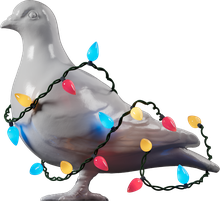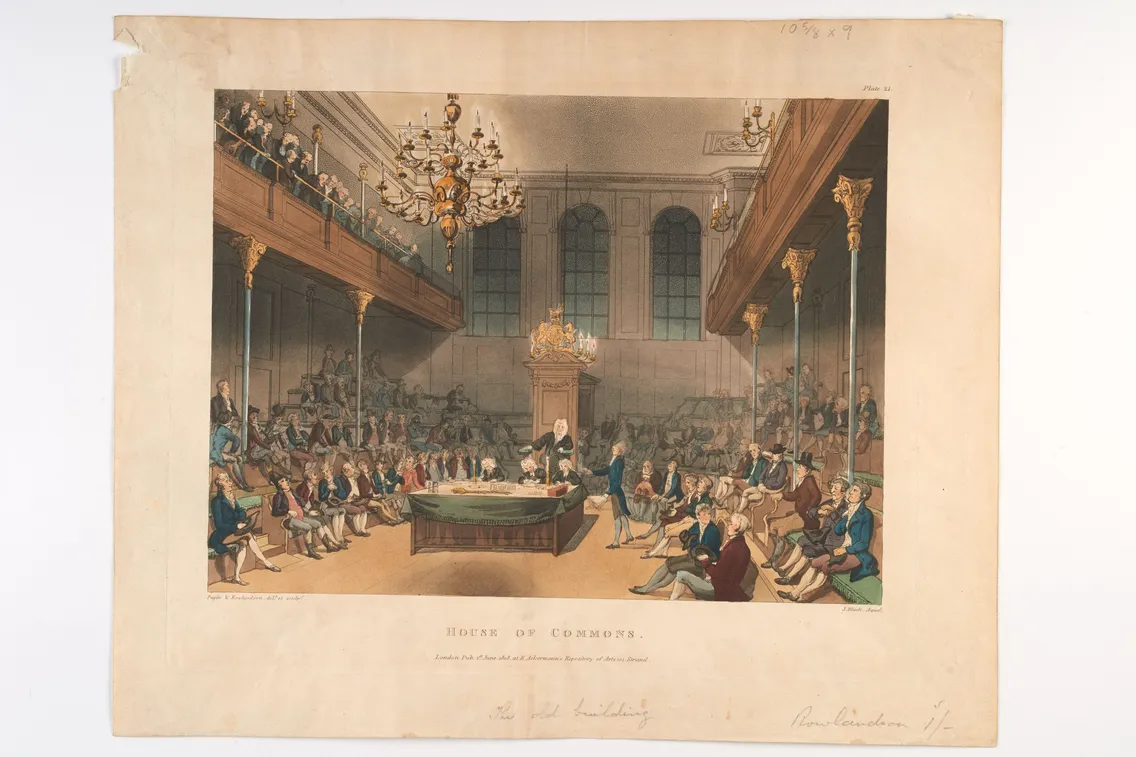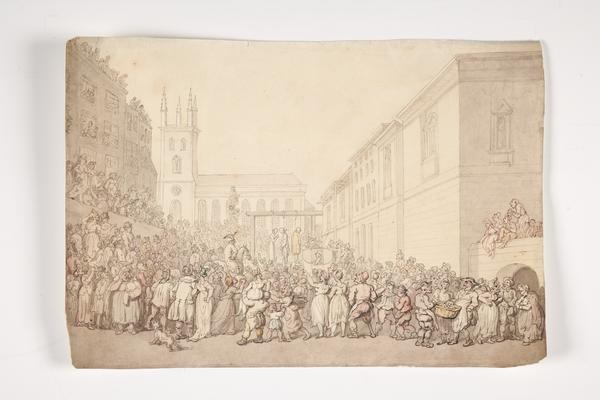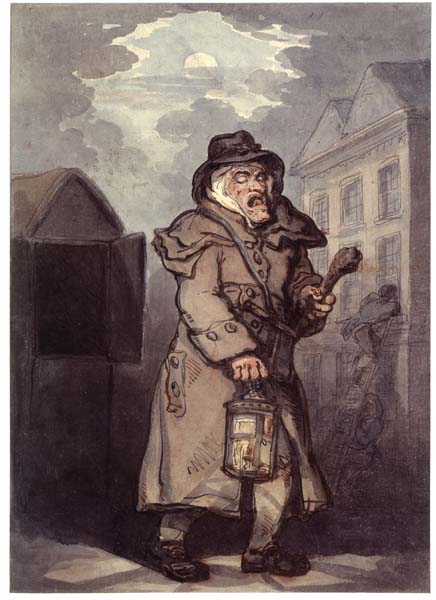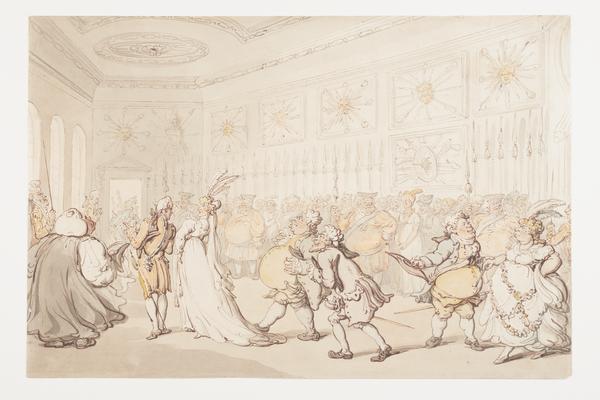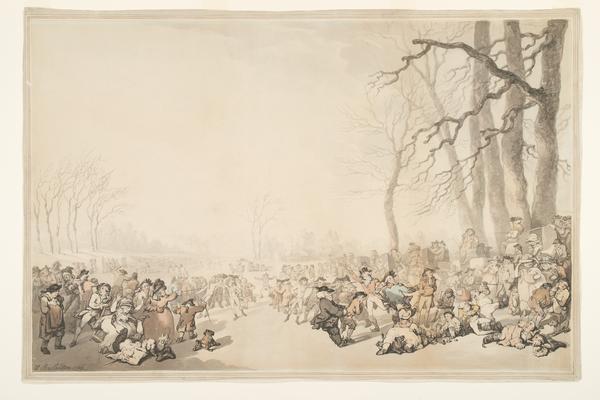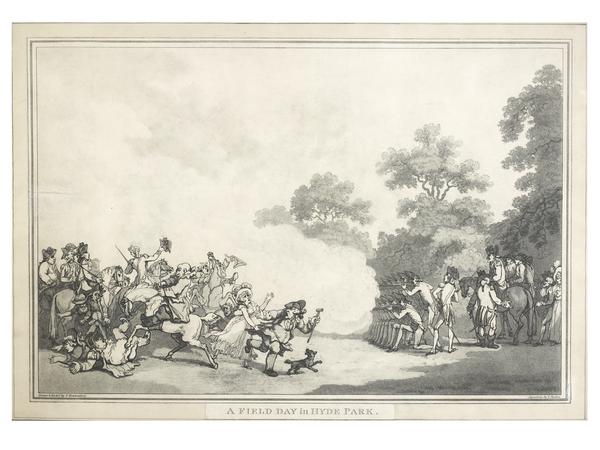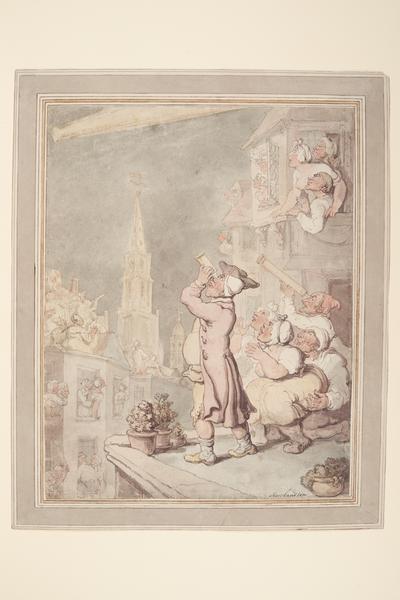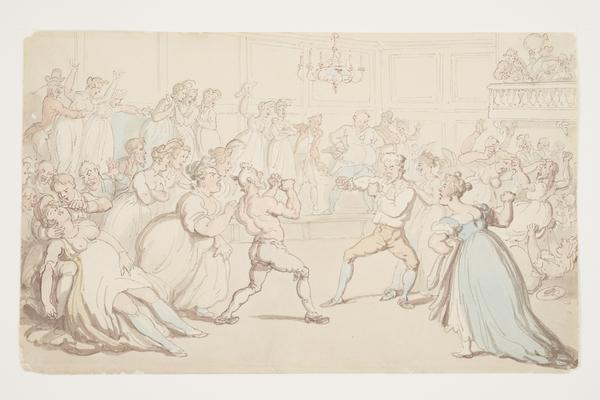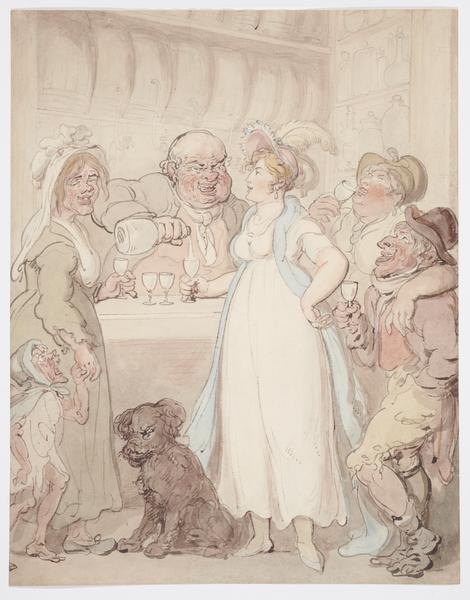Thomas Rowlandson’s satirical London drawings
Artist and printmaker Thomas Rowlandson drew scenes of London in the 18th and 19th centuries – its street traders, public hangings and theatres.
1757–1827

In one of his classic caricatures, Rowlandson shows customers sampling herbal remedies at an Italian warehouse in Haymarket, central London.
London life, drawn with a sense of humour
Rowlandson highlighted the way people thought and acted by drawing them in a humorous, exaggerated way. He showed London at its rowdiest, raunchiest and most corrupt.
He specialised in caricatures, a term used in the late 18th and early 19th centuries both for exaggerated comic portraits mocking specific people, and images satirising politics and society – much like the ones you still see in newspapers and magazines today.
Caricatures were sold in specialist print shops, and weren’t affordable for everyone. But among those with enough money, Rowlandson’s designs were a success.
His caricatures and book illustrations have become defining images of the Georgian period, a time named for its many kings named George.
Learning his trade
Rowlandson was born in 1757. His interest in drawing was recognised at a young age, and he joined the Royal Academy Schools at the age of 15. In 1775 he sent his first artwork to the academy’s annual exhibition.
While there, Rowlandson was drawn to John Hamilton Mortimer’s disturbing images of bandits and monsters. Mortimer was a painter associated with romanticism, a movement which prized imagination, drama and emotion.
Rowlandson was also influenced by the satirical prints of William Hogarth. Hogarth was the painter of A Rake’s Progress, the tale of a young man who is tempted by the vices of the city, sent to London’s Fleet Prison, and ends up at Bethlem Hospital.
Rowlandson completed his academic training, and later travelled to France and Italy to study the works of the European masters. But he was always committed to showing the funny side of society.
“the characters are often rowdy, drunk, flirtatious or aggressive”
London landmarks
Rowlandson’s career as an artist took off in 1780 when prints of his drawings began to be published.
He drew for various publishers, but from 1798 until 1827 he almost continuously worked on books for the publisher Rudolph Ackermann, including The Three Tours of Doctor Syntax.
One series was the Microcosm of London, published between 1808 and 1810. For these, Rowlandson added figures to famous London locations drawn by the artist Augustus Charles Pugin.
The series gives us the chance to look back in time at familiar places like the House of Commons, Sadlers Wells and Covent Garden.
Rowlandson’s other drawings show us more of the detail of Georgian life in London. There are coffeehouses, chop houses (basic restaurants), stock trading floors, a gin shop, a view of Elephant and Castle and an execution outside Newgate Prison.

Gin drinking, was a significant problem in the 19th century, and in this gin shop Rowlandson contrasts ugliness and beauty.
Georgian street traders
One of Rowlandson’s most revealing series, Cries of London, contains drawings of London street traders at the very start of the 19th century.
We’ve all heard today’s market sellers shouting about their produce at Columbia Road flower market or Billingsgate.
Back in Georgian London, roaming street sellers also used their voice to advertise – and many were drawn by Rowlandson: “Buy a trap, a rat-trap, buy my trap!”, “Buy my goose, my fat goose!”, “Hot cross buns, two-a-penny buns!”
One trader sells brick dust, recycled for use as a scourer. Another sells the “last dying speech” of publicly executed criminals.
Our collection includes some of Rowlandson’s original drawings, made in 1799, 1801 and 1820, which were later published as prints.
The drawings mocked similar artworks by the artist Francis Wheatley, who chose not to show any unhappiness or bad behaviour. In Rowlandson’s drawings, the characters are often rowdy, drunk, flirtatious or aggressive. There are flying fists and nudity, leering old men and sex workers.

Rowlandson draws a horse rider "Showing off in Rotten Row".
Famous faces
Satirical cartoons drawn by caricaturists were very popular in the 18th and 19th centuries. The most famous caricaturist, James Gillray, was known for his political comedy.
Rowlandson got his laughs poking fun at society and famous people – including the wealthy and powerful.
He drew a horse rider showing off on Rotten Row in Hyde Park. He also drew Emma Hamilton, who was often mocked because of her affair with the famous naval commander Admiral Nelson.

